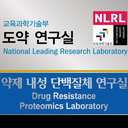Comparison of chemical compositions and antimicrobial activities of essential oils from three conifer trees; Pinus densiflora, Cryptomeria japonica, and Chamaecyparis obtusa.
Schlüsselwörter
Abstrakt
The chemical compositions, and antibacterial and antifungal effects of essential oils extracted from three coniferous species, Pinus densiflora, Cryptomeria japonica, and Chamaecyparis obtusa, were investigated. Gas chromatography mass analysis of the essential oils revealed that the major components and the percentage of each essential oil were 16.66% beta-phellandrene and 14.85% alpha-pinene in P. densiflora; 31.45% kaur-16-ene and 11.06% sabinene in C. japonica; and 18.75% bicyclo [2, 2, 1] heptan-2-ol and 17.41% 2-carene in Ch. obtusa. The antimicrobial assay by agar disc diffusion method showed that 2.2 microg of Ch. obtusa oil inhibited most effectively the growth of Escherichia coli ATCC 33312 and Klebsiella oxytoca ATCC 10031, whereas the C. japonica oil gave weak antimicrobial activity. The minimal inhibitory concentration (MIC) values for bacterial strains were in the range of 5.45-21.8 mg/ml depending on essential oils, but most Gram-negative bacteria were resistant even at 21.8 mg oil/ml. P. densiflora oil showed the most effective antifungal activity and the MIC values for Cryptococcus neoformans B42419 and Candida glabrata YFCC 062CCM 11658 were as low as 0.545 and 2.18 mg/ml, respectively. Cryp. neoformans B42419 was the most sensitive to all essential oils in the range of 0.545-2.18 mg/ml. Our data clearly showed that the essential oils from the three conifers had effective antimicrobial activity, especially against fungi.


